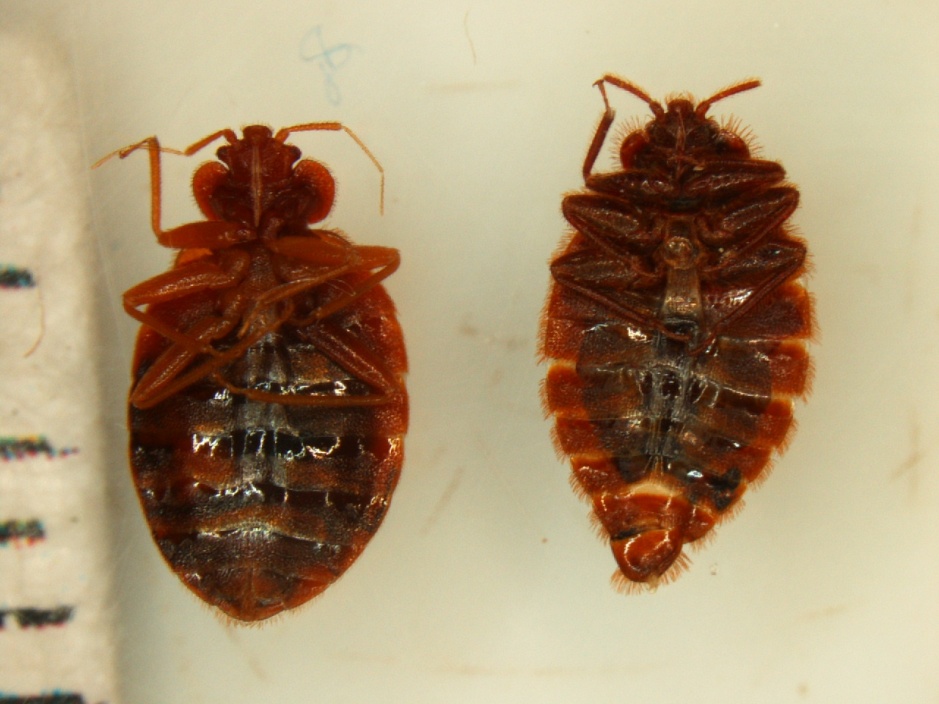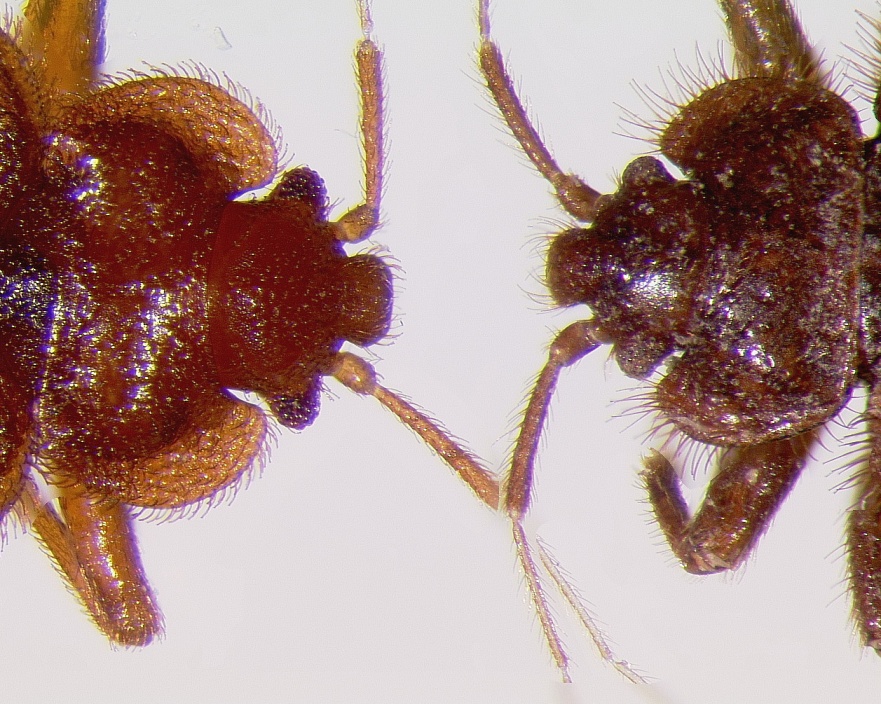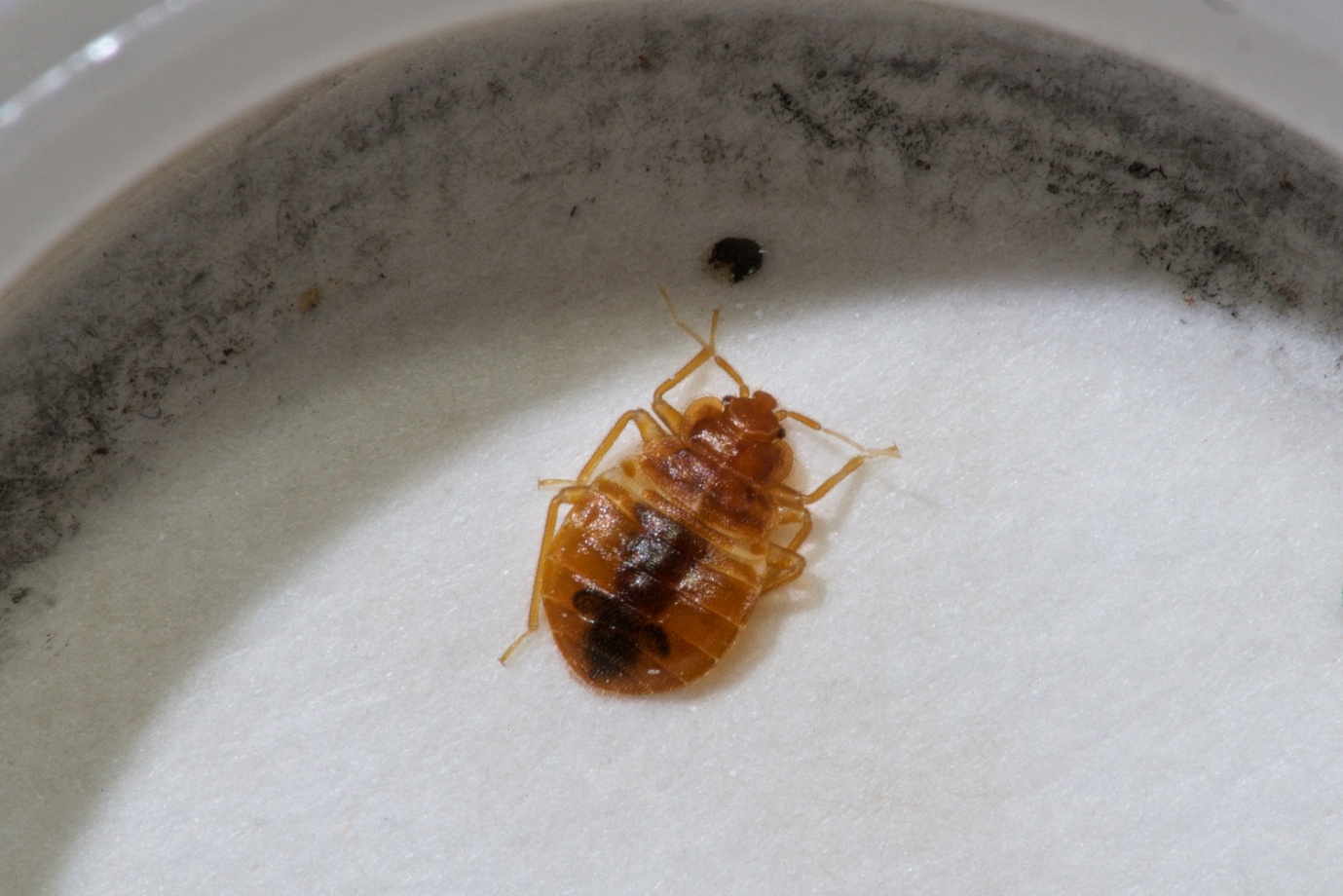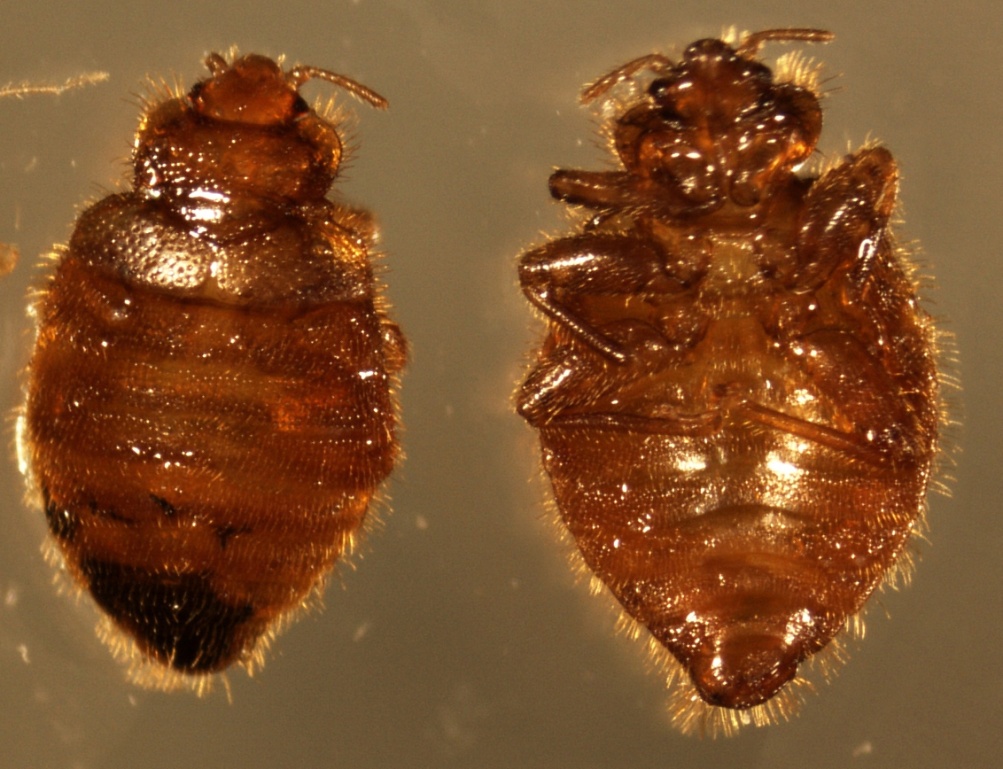Having many similarities to bedbugs, bat bugs are often mistaken for their bloodsucking friends. While a bedbug is considered gross and annoying, a bat bug is less irritating for humans since it is supposed to feed on bats instead of persons.
Many people would think that any bug living and hiding on their mattress is a bedbug. However, you might find another type of pest than a bedbug too. Moreover, understanding the difference between them could help you determine the right way to get rid of the pest.
Among the number of bugs out there, a bat bug is the most frequent pest to be mistaken as a bedbug. This is because both of them are considered originating in caves during the near the beginning of humans and bats.
Considering the history, studies show that bedbugs started to grow up when humans start to move out of their caves a long time ago. Through the years, each of the bugs is developing into different species although they still own noticeable analogous traits.
How Is the Appearance of Bat Bugs?

source: southdakotabugs.files.wordpress.com
Unfortunately, it is highly difficult to tell any dissimilarities between a bedbug and a bat bug since both of them are mostly similar. Even though there are some variations, they are very mild and it is safe to say that only a skilled professional might be capable to show them.
Because of the appearance of a bedbug and bat bug that is very similar, you may even need a microscopic examination to see the dissimilarities. When it comes to color and body shop, a bat bug would exactly look like a bedbug.
This bug has a brown, oval-shaped body with three-eighths of an inch in terms of length.
If you want to look closer to the hair of these two pets, a different trait could be exposed. This is because a bat bug tends to come with longer hairs, especially on the upper thorax while a bedbug has fewer hairs in that area.
Indeed, it is not possible to discover the dissimilarity at first glance if you do not use a microscope. When it comes to behavior, both of them are known as a kind of blood-sucking parasite that loves to be nourished by warm-blooded mammals, including humans.
Since we are talking about appearance, a bat bug would look similar to a bedbug during feeding too. In this case, a bat bug’s abdomens could enlarge in size and become red because of the blood it is sucking. Here, its flat body would become fat in a few minutes only.
Well, a bedbug and bat bug might feed on the same food namely blood, but they have different favorite hosts. As you might already know, bedbugs like feeding on humans better than other mammals.
On the other hand, a bat bug would prefer to feed on bats as its name suggests. We could not deny that bat blood is highly crucial for bat bugs’ continuous reproduction and existence.
Nevertheless, nowadays, this insect has been discovered to start feeding on other types of mammal. Humans are included in a bat bug’s target, especially if the bat hosts discard this pest.
What Are the Common Place for Bat Bugs to Live?

source: https://i.redd.it/sigsxy7avfu11.jpg
If you are looking for a difference between a bedbug and bat bug, mind about where they naturally live in. When it comes to bedbugs, they generally found within several feet only of humans or other feeding hosts.
In this case, headboards, couches, mattresses, and baseboards are the most common place for bedbugs to hide and live around your environment. Bedbugs often hitchhike secondhand pieces of furniture as well.
We cannot deny that you are probably capable to see a bat bug in the place mentioned before. However, this pest is mostly discovered in space where bats are potentially harboring on it like attics.
You may locate a bat bug on the walls or ceilings, but this pest typically stays close to where its food resource is residing around. This means it would be less likely for you to find a bat bug on the mattress, couches, or other areas where a bedbug usually lives in.
A variety of bat species could become the main hosts of a bat bag. However, the most familiar species include little brown bats and big brown bats.
Considering its primary food source, a bed bug could settle in a structure that its hosts have built up a colony in unemployed chimneys, attics, wall voids, or any other unused spaces around a building. You tend to discover a bat bug in crevices as well as fractures in bat roosting vicinities.
What Are the Dissimilarities between Bat Bugs and Bedbugs?

source: https://cpb-us-w2.wpmucdn.com/u.osu.edu/dist/8/5176/files/2014/09/bed-bug-L-bat-bug-R-head-and-prothorax-comparison-2k86xg2.jpg
Some of the key differences between these pests have been mentioned above. To make it easier for you to tell the differences between a bat bug and bedbug, let us look at the breakdown of the said matter.
Habitat Dissimilarity
Different from a bed bug, a bat hug would roam around its bat hosts only. However, they could go away when the host abandoned them.
Meanwhile, a bedbug would settle near to its human hosts by concealing itself within the headboards, mattresses, and other pieces of furniture throughout the day. When the night comes and the humans are sleeping, a bedbug would start coming out and feed on its hosts.
Appearance Dissimilarity
A bedbug typically owns shorter hair than a bat bug, but you may need to use a microscope to see it clearly
A bedbug could be seen around humans while a bat bug would typically settle around bat since it feeds on bat blood
Diet Dissimilarity
While a bedbug mainly feeds on humans, a bat bug primarily gets its food from bats. Nevertheless, it could also feed on humans when its bat hosts departed and leave it behind.
When a bat bug is roaming to your bedrooms or living rooms, it frequently creeps around furniture and carpeting for a long time since this pest can survive for more than a year without eating.
Aside from bats, bat bugs can suck blood from humans, cats, and dogs. This pest may even hitchhike on rats and mice, making it easy for them to enter your basements and kitchens.
Methods of Control Dissimilarity
When you want to control the infestation of bedbugs, it might be helpful to change their reproductive cycle. It can be done via comprehensive pest management, such as utilizing carbon dioxide’s cooling agents and eliminating all the live bedbugs as well as their eggs.
Moreover, it is also possible to give bedbugs an exposure of super high-temperature conditions to eliminate them.
On the other hand, you could easily control bat bugs by reducing the number of bats in your home or building. At this point, you only need to disinfect the affected spaces once the bats have been wiped out of the home.
How Could I Trace Bat Bugs inside the Home?

source: http://www.pestcontrolasap.com/wp-content/uploads/2017/01/bigstock-138496520.jpg
The appearance of these bugs in your home hints that bats currently live in the attic or are used to settle in the wall void. A bat bug will not attach to its bat host like a tick since it is rather staying the roost of a bat colony.
Once you locate a bat bug around your living spaces, it could suggest that its bat hosts have already departed from their nest and not come back after a long time. This way, a bat bug tends to search for new hosts, including humans.
If a bat bug has found an entry point to your living spaces, it is likely to conceal itself in the fabric folds or murky crevices.
Then, how serious is the presence of a bat bug in your home? Even though it does not prefer humans as its main host as a bedbug does, there is a chance when it starts sucking your blood because its bat hosts head off for a while.
Similar to bedbug bites, bat bug bites could be unpleasant and itchy too. However, luckily, a bat bug has not been found to transmit any known diseases to humans.
You could know that there is a bat bug in your home when its bites are exposed. It is possible to discover some little bloodstains on your bed sheets or furniture as well when there is a presence of a bat bug.
What Will Happen If Bat Bugs Bite Me?
Like bedbug bites, bites you got from a bat but may feel painless at first. However, it might leave inflamed spots on your skin. You may feel itching sensation and find swelling in the affected area.
Luckily, bat bug bites will not cause any further diseases to humans. Nevertheless, we cannot deny that it is still irritating to find such parasites around your home, particularly since this pest is frequently mistaken to its bloodsucker relative: bedbugs.
Since the bite of a bat bug typically leaves small, itchy welts, you could treat it by using anti-itch cream or consume an oral antihistamine to calm the itching sensation. You could also take an OTC pain reliever in case the bite result in a very painful feeling.
Some home remedies including honey and toothpaste are known to be good for reducing inflamed skin caused by bat bug bites. If the problem persists, consider visiting your doctor for further diagnosis after being bitten by a bat bug.
How Do You Control Bat Bugs at Home?

source: https://www.rentokil-steritech.com/blog/wp-content/uploads/2019/06/Bed-Bug_Report-533913116.jpg
As mentioned above, you could simply eliminate bats in your home to control these pests. After getting rid of the bats around your home, make sure to seal all the exterior entrance spots so that bats and the pests will not enter the building anymore.
Furthermore, you may need to give particular attention to cracks and crevice where bats could enter your home easily. It is important to examine all bat harborage as well to make sure they do not abandon the bugs here.
You should give particular attention to spaces around properties leading indoors, like vents, chimneys, plumbing chases, and light fixtures. You are highly recommended to do this treatment since it could prevent bat bugs from migrating to your living spaces after losing their favorite hosts.
In case you locate a brown, oval-shaped insect that has a size similar to an apple seed creeping down an attic or chimney, categorize and verify the species as soon as possible. After that, schedule a treatment immediately before the infestation is getting bigger.
For your information, bat bugs are highly capable to lay countless eggs and bloom in a short time. When it happens, the time and cost needed for the treatment would be improved as you leave the problem uncontrolled.
It is common to locate a bat bug or two appearing in your living space a few weeks after the treatment before this pest is completely removed for your convenience.
What Are the Other Things to Know about Bat Bugs?

source: https://3.bp.blogspot.com/-7Iu4gPxG0W4/VzptX79yKhI/AAAAAAAAF3U/CZGTaoujOH0j2wBimeBs3wRoznxDqVhAgCLcB/s1600/bat%2Bbug%2Bcomparison.jpg
You have already known the dissimilarities between a bat bag and bedbug and ways to control this pest in your home. In addition to some of the points mentioned above, here are the other things you should know about a bat bug.
Species
A bat bug is identified in the family of Polyctenidae and has around 20 species in the Heteroptera order. This insect is known to be an external parasite discovered primarily in the tropical bats’ fur.
The adult bat bug typically has 3.5 to 5 mm long and does not have wings as well as eyes. As its family name suggests, a bat bug owns comb-like strips of spines on its body that could vary in number.
Eastern bat bug (Cimex adjunctus) and African bat bug (Afrocimex constrictus) are among the known species of a bat bug.
Life Cycle
From egg to adult, a bat bug may take around two to 15 weeks to grow depending on the circumstances. An ideal condition for a bat bug to develop properly is a place with enough food supply and warm temperature.
The average development of a bat bug until it reaches adulthood is around one and a half months. Once it becomes an adult, a bat bug is capable of still alive even though it does not get any food in a year.
Similar to the familiar bedbugs, bat bugs need blood to molt while the female species have to get bat blood to lay eggs.
In conclusion, a bat bug and bedbug may have a similar appearance in our view, but these are two different species with dissimilar behaviors. A bat bug is dependent to bat hosts while a bedbug normally prefers humans as its primary food source.
Now that you already know some of the ways to differentiate bat bugs and bedbugs, it would be easier to determine what to do if you see one of them in your home.
References:
https://en.wikipedia.org/wiki/Bat_bug
https://www.orkin.com/other/bat-bugs
https://www.pctonline.com/article/how-to-deal-with-bat-bugs/
https://www.britannica.com/animal/bat-bug
https://www.resteasypestcontrol.com/bat-bug-vs-bed-bug-what-is-the-difference/